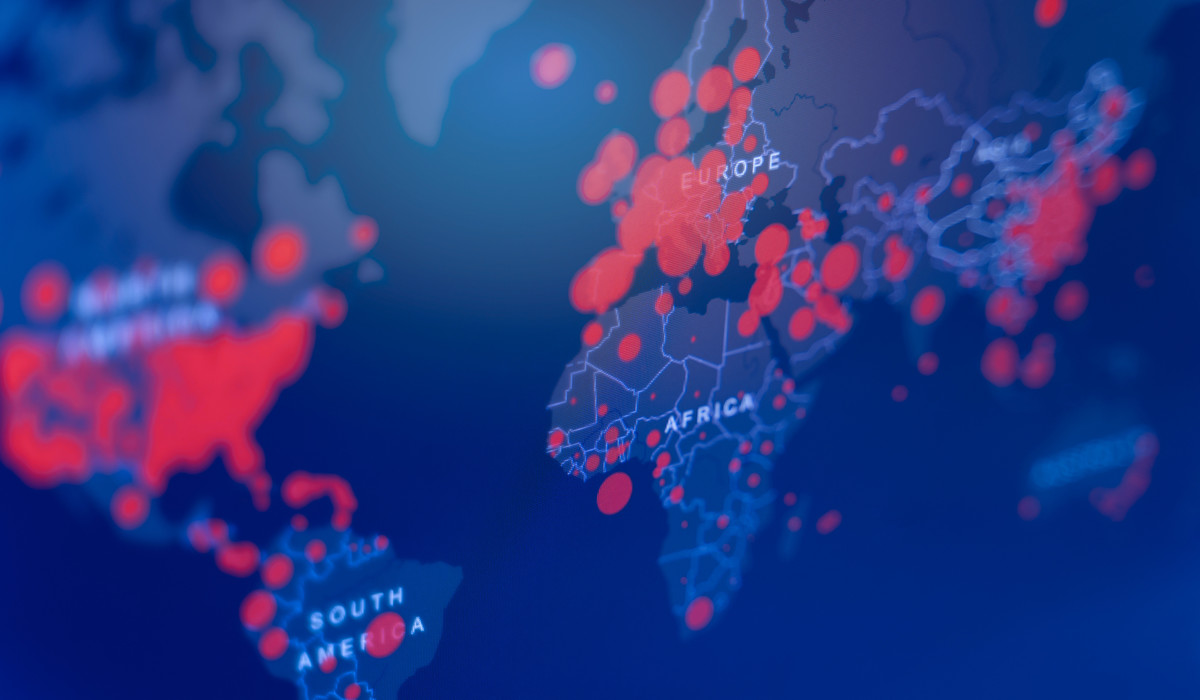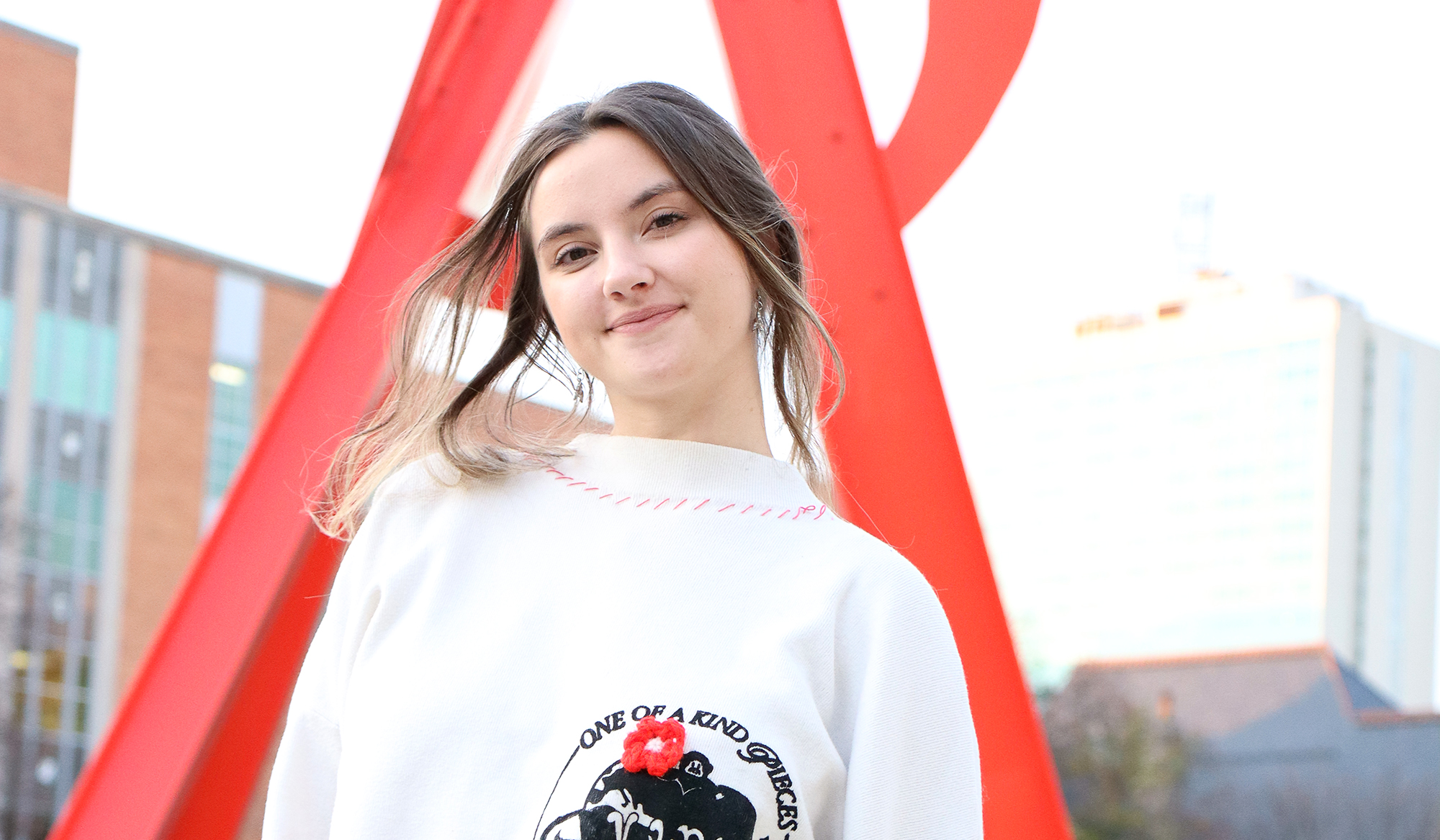Medical experts had been expecting the “next big one” for some time. They knew it was a matter of when —not if. Yet no one was fully prepared for the COVID-19 pandemic when it struck. Many months later, the disease is still wreaking havoc around the globe.
U-M professor and medical historian Howard Markel, ’82, MD’86, believes the hard-won lessons learned from this pandemic ― and others throughout history ― can help government leaders and public health officials make better decisions and earlier preparations for the next killer virus that comes along. And there will surely be one in the future.
“We are living in an era of newly emerging infectious diseases as well as the recurrence of old-fashioned ones such as tuberculosis and malaria,” says Markel, the director of the U-M Center for the History of Medicine.

Over the course of his 34-year medical practice and 27-year teaching career at the University, Markel has delved into some of the world’s deadliest pandemics, including the 1918 flu, bubonic plague, typhus, cholera, HIV/AIDS, Ebola, and tuberculosis. Known for coining the phrase “flattening the curve,” he also has served as principal historical consultant on pandemic influenza planning and policy for both the U.S. Department of Defense and the Centers for Disease Control and Prevention (CDC).
With the coronavirus firmly on the global radar, Markel is documenting the new deadly milestone in medical history and adding an update on SARS-CoV-2 (the coronavirus that causes COVID-19) to the second edition of his 2005 book, “When Germs Travel: Six Major Epidemics That Have Invaded America Since 1900 and the Fears They Have Unleashed.”
“We live in a global village, and a disease outbreak anywhere can quickly go everywhere, as we saw with COVID-19 and earlier with influenza and Ebola,” says Markel. “Germs have always traveled, but now they travel with the speed of a jet flight, which can take an infected person anyplace on the globe in a day.”
Markel recommends a number of preemptive actions that government leaders and public health officials can take now to head off the next pandemic.
GLOBAL DISEASE MONITORING
Detecting emerging infectious diseases before they explode into regional epidemics or global pandemics is critical for saving lives, says Markel.
“As people venture further into areas where they’ve never lived before and interact with other species of animals, the chances of so-called ‘zoonotic infections’ (which jump from animals to humans) increase,” he says.
Like many medical experts, Markel believes the current novel coronavirus might have come from horseshoe bats in central China’s Hubei Province and infected food vendors and local shoppers at a wet market in Wuhan where exotic wild animals are slaughtered and sold. By the time Chinese officials locked down Wuhan, 5 million infected individuals had already left the city, carrying COVID-19 to other regions of China. In a deadly domino effect, the disease jumped across continents and went on to infect victims in more than 200 countries and territories worldwide.
“Germs have always traveled, but now they travel with the speed of a jet flight, which can take an infected person anyplace on the globe in a day.”
– Howard Markel
Similar spillovers of animal infections into human populations have caused a number of other deadly pandemics in the past, according to Markel. AIDS most likely originated in chimpanzees. Ebola circulated in bats and apes. And SARS was found in civets. Migratory ducks and geese, domestic poultry flocks, and pigs also played a role in transmitting influenza viruses to people over the years.
“We’ve learned time and again throughout history that public health officials are usually a step or two behind the microbes in question, so speed in detecting and stopping the spread of an infectious disease is critical,” Markel says. “Early is better. Earliest is better still.”
Early detection requires a coordinated global surveillance system, such as the U.S.’s decadelong PREDICT early warning pandemic initiative, according to Markel.
Launched in 2009 under the Obama administration, PREDICT was designed to detect animal viruses that someday might infect humans and trigger a disease outbreak. The program, funded by the U.S. Agency for International Development, sent teams of epidemiologists and wildlife veterinarians into potential hotspots in Southeast Asia, the Amazon, and Congo to collect biological samples from bats and other mammals suspected of harboring diseases.
Over 10 years, the researchers identified more than 1,000 new viruses, including 200 coronaviruses, which posed possible spillover threats to humans. In 2019, the Trump administration shuttered PREDICT. One year earlier, the National Security Council’s global health security unit was disbanded, and a high-ranking White House official responsible for pandemic response resigned. In addition, basic research programs on coronaviruses were hobbled or halted.
“The CIA has declared that pandemics pose one of the great risks to our national security,” Markel says. “But we kind of shot ourselves in the foot by removing or defunding programs that were monitoring potentially dangerous viruses worldwide.”
PANDEMIC TRANSPARENCY AND QUICK ACTION
Briefing government officials about emerging infectious diseases is only half the battle, however. Leaders also need to report outbreaks, share information with other countries, and take decisive action to control the spread of contagions.
“In past pandemics, the concealment of an outbreak by one country or a particular group has had disastrous effects,” Markel says. “A cover-up basically gives the pandemic a running head start.” China dragged its feet before acknowledging the appearance of COVID-19. By then it was spreading like wildfire.
“China did not want to let outside guest scientists into the country, even though CDC researchers offered to come,” Markel says. “That was a problem, because different nations’ scientists have different perspectives, information, and resources that can be helpful in a pandemic.”
America’s muted response to the threat put it squarely in the COVID-19 bull’s-eye. By the time a limited travel restriction on foreign nationals arriving from China was instituted in early February, it was too late. The coronavirus had already landed on American shores from Asia as well as Europe.
“We’ve learned time and again throughout history that public health officials are usually a step or two behind the microbes in question.”
– Howard Markel
“Ignoring these pandemic threats only comes back to bite you,” Markel says. “In the case of COVID-19, downplaying and denying the risk of what was coming has had ramifications that are beyond most people’s imagination.”
As of Dec. 4, 65 million people in the world have contracted the disease and 1.5 million have died, according to the Johns Hopkins Coronavirus Resource Center. In the U.S., 14 million Americans have fallen ill and 276,000 have lost their lives to the disease.
Historical studies conducted at the U-M Center for the History of Medicine, coupled with computer modeling and real-time scenarios from the 2009 H1N1 flu and COVID-19 pandemics, have shown that countries and states that act early to limit the spread of a contagious disease ―through social distancing, mask mandates, quarantines, and closure of schools and public gathering places ― report far better success in reducing the number of cases and deaths.
“Testing is key, because numbers, data, and quantification of the problem are the essence of epidemiology,” Markel says. “You cannot fully address the public’s health if you don’t know the extent of the situation you are managing.”
Case tracing for an easily transmitted respiratory virus is difficult, if not impossible, he adds. One sick person, for example, can infect a hundred or more people at a large event.
“That’s why we recommend a strategy of social distancing to minimize the number of new cases sprouting up and thus make case tracing more manageable,” Markel says.
SEARCH FOR A CURE
Throughout history, medical scientists have searched for vaccines, treatments, and cures to combat a wide range of deadly pathogens. While there have been some breakthroughs, the overall track record has been spotty.
“Not all infectious diseases are the same, and eradication is not assured in many instances,” Markel says. “The CDC collaborated with the World Health Organization to eradicate smallpox in 1980. Medical science also has made great strides over the years with HIV/AIDS, tuberculosis, and childhood diseases such as whooping cough, measles, mumps, and chickenpox.”
Yet the battle is far from won.
HIV/AIDS remains prevalent around the world, particularly in developing nations where people have limited access to health care and can’t afford expensive drugs. The rise of multidrug-resistant tuberculosis has turned back the clock to the 1800s, when the disease accounted for one in four deaths in Europe and North America. Sexually transmitted diseases, such as gonorrhea, are now controllable, but eradication is still difficult.
The recent rise of an anti-vaccination movement has reopened the door to childhood diseases. Polio remains a real threat in Middle Eastern countries, and recent mutations of the virus have required a reformulation of the polio vaccine.
“We haven’t conquered infectious diseases,” Markel concedes. “We have just wrestled them to a draw. Anyone who thinks otherwise is a prime candidate to get sick.”
Historically, the development of a safe, effective vaccine for a contagious disease was a slow, laborious process, often taking decades or even centuries.
Much has changed, thanks to advances in medical science, data analysis, and pharmaceutical manufacturing.
“It’s incredible how quickly we’ve nailed down the genome, transmission pattern, and clinical picture of COVID-19,” Markel says. “We know more and more with each passing day.” However, making a vaccine is difficult and requires transparency, careful testing, and a fail-safe mechanism to ensure no one is hurt or killed by mistake. “The process can be shortened here and there, but it must not be short-changed,” Markel cautions. “Once a proven COVID-19 vaccine is available, we all have to roll up our sleeves.”
Getting so-called “active immunization” from a vaccine, he adds, is more long-lasting and safer than getting short-term passive immunization by catching the disease and risking reinfection or “long-hauler” complications (those that last after the initial illness).
Despite the many obstacles the world faces in its battle against the coronavirus pandemic, Markel sees light at the end of the tunnel.
“Every nation, every civilization, and almost every generation in human history has confronted a contagious crisis like this one,” he says. “They’ve all come through on the other side. I know we will, too.”
What keeps Markel and other medical experts awake at night is the knowledge that the next big one will arrive someday. It may already be on its way.
TIMELINE OF OUTBREAKS IN THE U.S.
1633-34
European settlers bring smallpox to North America.
1793
Refugees fleeing yellow fever in the Caribbean arrive in Philadelphia, carrying the virus with them.
1832-66
The U.S. experiences three waves of cholera, which begins in India and spreads around the world through trade routes.
1858
Scarlet fever also comes in waves.
1906-07
Mary Mallon, aka “Typhoid Mary,” spreads the virus in New York during her time as a cook on an estate and in a hospital.
1918
The H1N1 strain of flu, which spreads around the globe each year, causes a pandemic then known as the Spanish flu (even though it did not come from Spain).
1921-25
The U.S. experiences a diphtheria epidemic that peaks in 1921 at 206,000 cases.
1916-55
Two major polio outbreaks occur in 1916 and 1952, with regular outbreaks throughout the 1950s.
1957
H2N2 flu virus is first reported in Singapore and Hong Kong before arriving in the U.S. that summer.
1981-91
Measles vaccines in the 1960s had greatly reduced the rate of the disease. But a second measles outbreak occurs in the U.S., prompting a recommended second dose of the vaccine.
1993
Water in Milwaukee contaminated with cryptosporidium causes an infection affecting more than 400,000 people.
2009
The H1N1 flu, labeled the “swine flu,” is detected in the U.S. and spreads across the world.
2010, 2014
Whooping cough, or pertussis, kills 10 infants during the first outbreak. Subsequent outbreaks occur every three to five years.
1980s to present
HIV and AIDS are first documented in the U.S. in 1981.
2020
COVID-19 spreads to the U.S.
Adapted from “The Worst Outbreaks in U.S. History” on Healthline.com
Claudia Capos, an award-winning journalist, is the owner of Capos & Associates, a communications company. Her articles on research, business, celebrities, and travel have appeared in national and international publications.





